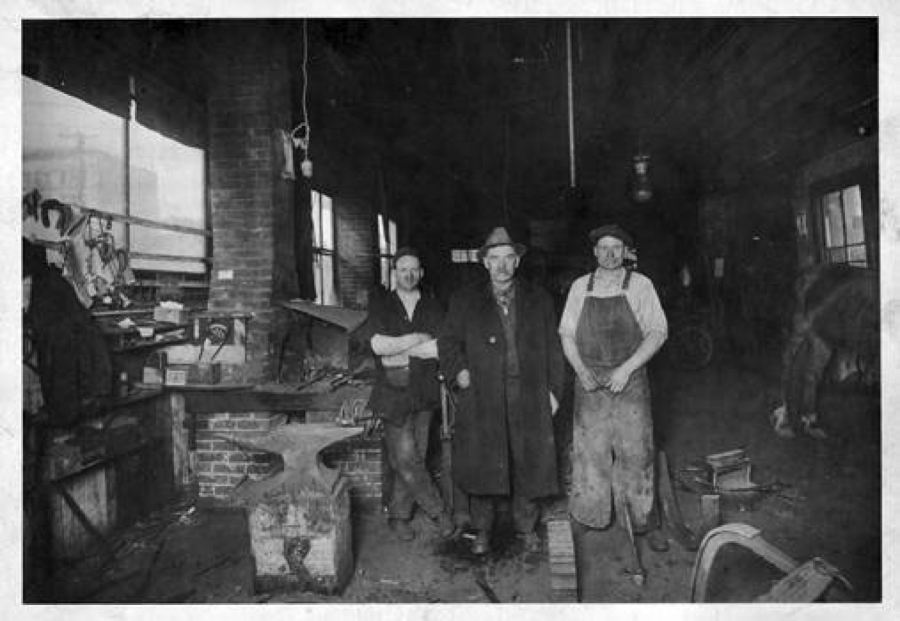Well into the automobile era, the manufacturing heartbeat of Clark County was its many blacksmith shops. Each community from Amboy to Camas boasted a forge at one time or another. Historians trace blacksmithing to the Hittites around 1500 B.C., when they discovered how to forge and temper iron and kicked off the Iron Age. Tools became stronger than stone.
Things made of iron were so important that explorers Meriwether Lewis and William Clark brought three blacksmiths on their expedition. Blacksmithing was invaluable in the remote West. Using a coal-fired forge, anvil and hammer, a smithy could make axles, axes and crowbars — as well as hinges for doors, hoops for wooden barrels, wagon wheel rims, pots and nails. They even made the tools they used — tongs, twisting bars, cold chisels and hammers.
George Aiken opened a forge outside of Fort Vancouver in 1840, running it for 10 years, beating out knives and beaver traps used by Hudson’s Bay Company employees and fur trappers. In 1856, S.P. Marsh blacksmithed at the fort. He ordered 29 tons of iron, which arrived via Cape Horn, and shared it with other blacksmiths for a small profit.
Starting at age 13, he blacksmith apprenticed for seven years. He learned how to use the primary tools of the trade — anvil, forge, hammer — and how to coax iron from a brittle, grainy crystal-like structure to a longer, more fiberlike form, increasing its strength and flexibility.



